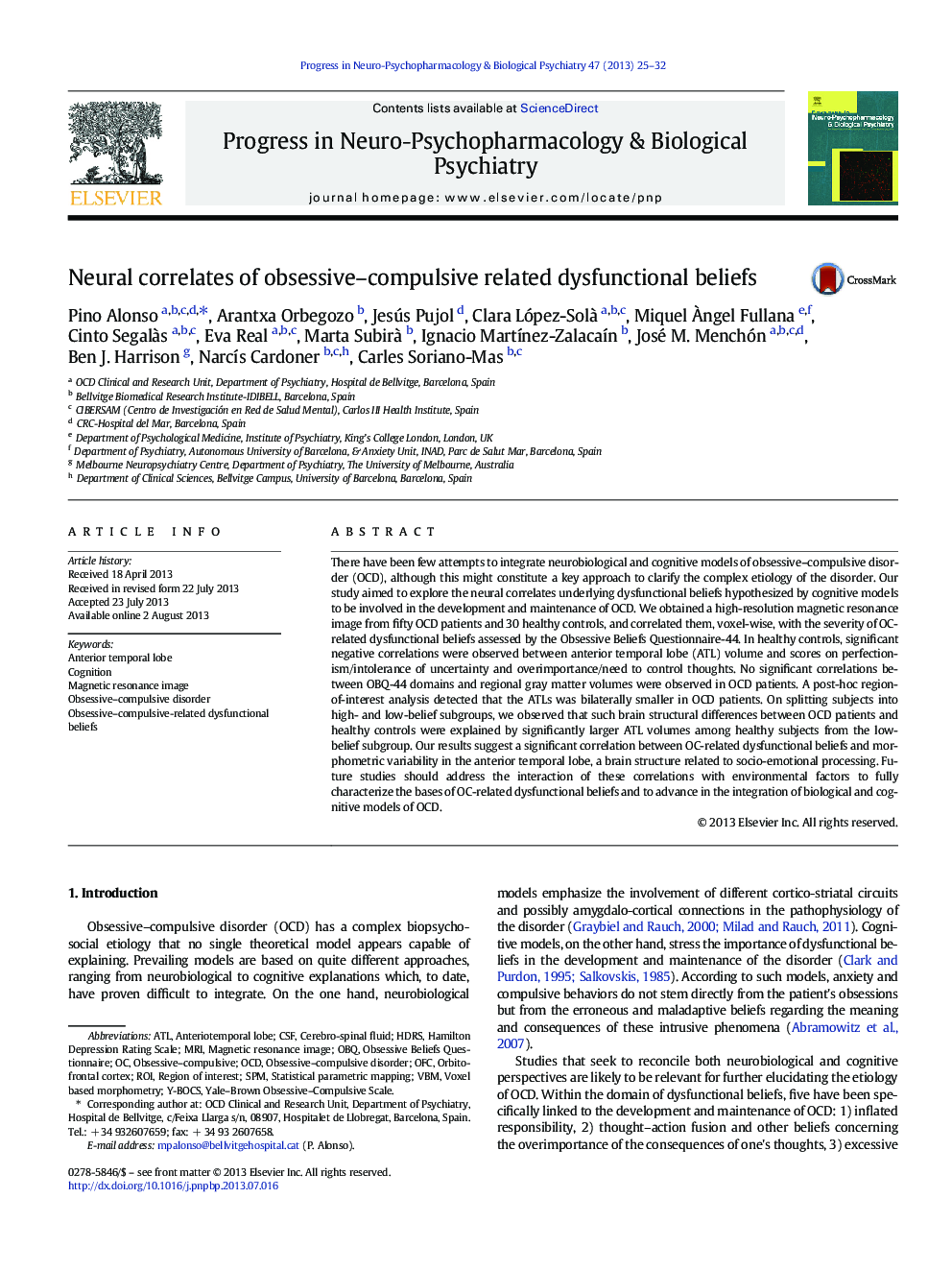| کد مقاله | کد نشریه | سال انتشار | مقاله انگلیسی | نسخه تمام متن |
|---|---|---|---|---|
| 2564891 | 1561047 | 2013 | 8 صفحه PDF | دانلود رایگان |

• We investigated the neural correlates of OCD-related dysfunctional beliefs.
• In healthy subjects, they were correlated with the volume of the anterior temporal lobe (ATL)
• OCD patients showed a significant bilateral reduction of the ATL volume
• Integrating biological and cognitive models can help to disentangle OCD
There have been few attempts to integrate neurobiological and cognitive models of obsessive–compulsive disorder (OCD), although this might constitute a key approach to clarify the complex etiology of the disorder. Our study aimed to explore the neural correlates underlying dysfunctional beliefs hypothesized by cognitive models to be involved in the development and maintenance of OCD. We obtained a high-resolution magnetic resonance image from fifty OCD patients and 30 healthy controls, and correlated them, voxel-wise, with the severity of OC-related dysfunctional beliefs assessed by the Obsessive Beliefs Questionnaire-44. In healthy controls, significant negative correlations were observed between anterior temporal lobe (ATL) volume and scores on perfectionism/intolerance of uncertainty and overimportance/need to control thoughts. No significant correlations between OBQ-44 domains and regional gray matter volumes were observed in OCD patients. A post-hoc region-of-interest analysis detected that the ATLs was bilaterally smaller in OCD patients. On splitting subjects into high- and low-belief subgroups, we observed that such brain structural differences between OCD patients and healthy controls were explained by significantly larger ATL volumes among healthy subjects from the low-belief subgroup. Our results suggest a significant correlation between OC-related dysfunctional beliefs and morphometric variability in the anterior temporal lobe, a brain structure related to socio-emotional processing. Future studies should address the interaction of these correlations with environmental factors to fully characterize the bases of OC-related dysfunctional beliefs and to advance in the integration of biological and cognitive models of OCD.
Journal: Progress in Neuro-Psychopharmacology and Biological Psychiatry - Volume 47, 2 December 2013, Pages 25–32